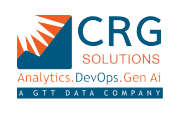Organizations are constantly in search of tools that offer comprehensive insights and streamline decision-making. Tableau Pulse and traditional monitoring tools both offer different capabilities but understanding their differences can help in choosing the right solution for your needs.
Tableau Pulse: It is a new player in the monitoring tools space and is the better version of Tableau, the powerful data visualization platform. It focusses on real time analytics and interactive dashboards with a modern, user-friendly interface. Pulse uses Tableau’s visualization capabilities to provide actionable insights and allows users to keep a track of KPI’s and trends. The most important feature of Tableau Pulse is its integration with Tableau’s existing system. This allows a free flow of data along different Tableau products making sure that users can access and analyze real-time data without the need to switch between multiple tools. The interface is designed to be customizable in multiple aspects and also lets users tailor their dashboards to their specific business needs.
Traditional Monitoring Tools: Traditional monitoring tools, for example Nagios, Zabbix, or SolarWinds, are essential tools in IT and operational industry. They offer stability, broad monitoring capacity and alerting systems. They are best in tracking system health, performance metrics and network traffic – so are good options for IT infrastructure and network monitoring.
However, the traditional tools are sometimes rigid, which needs a higher learning curve. And with less importance on interactive data visualization, they provide detailed reports and alerts but lack the advanced data analysis and visualization features that today’s users want. They may also require additional setup and configuration when integrated with other analytics platforms, which is time consuming and can get complicated.
Comparative Analysis
- Usability: Tableau Pulse ranks the best in usability with its modern interactive dashboard that simplifies data exploration and presentation. Traditional tools require more effort to navigate and interpret data and it can be challenging to those who are not very familiar with their interface.
- Integration: Pulse has the added advantage of seamless integration with Tableau’s collection, which allows easy data management and visualization. Traditional tools are strong and perform well but need additional configurations in order to integrate with other data platforms.
- Real-Time Analytics: Pulse provides real-time analytics and visualizations, which allows users to easily track KPIs in a dynamic manner. Traditional tools also offer real-time monitoring but lack the advanced visualization features when compared to modern tools like Pulse.
- Customization: Pulse’s customizable dashboards meet its user’s specific needs and this improves the relevance of insights generated. Traditional tools are less flexible in terms of data presentation and user customization.
Both Tableau Pulse and traditional monitoring tools have their own advantages and can be used based on organizational needs. But Tableau Pulse offers a modern integrated approach with visualization capacity, which is best for the ever changing, data driven environments of today. Traditional monitoring tools provide a stable monitoring for IT and network infrastructure. They are the best in maintaining and optimizing IT systems, promising reliable operation and effective management of network resources. Their proven track record and reliability make them invaluable for organizations focused on infrastructure health and system performance.
A better knowledge of the unique strengths of Tableau Pulse and Traditional Monitoring Tools can guide businesses in selecting the tool that best fits their operational and analytical requirements.
Data analytics is the ultimate key to success. The usage of data analytics across industries is driving innovation, ensuring compliance, reducing costs and also providing a competitive advantage. Connect with us to learn how these tools can help you rise above the sea of data. Maximize your business value with CRG Solutions!




Leave a Comments
You must be logged in to post a comment.